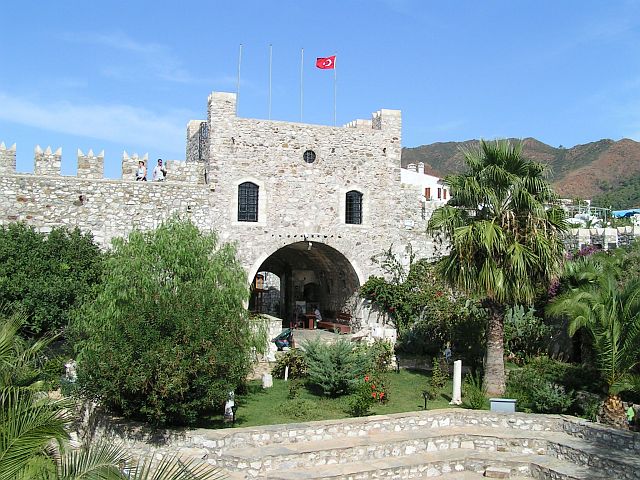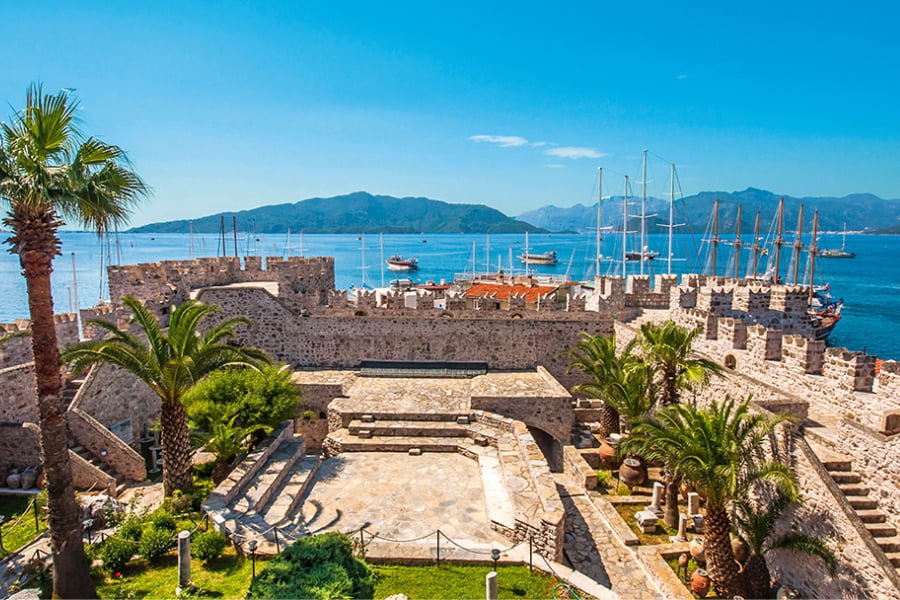Marmaris Castle
Marmaris is a city in Turkey located close to the point where the Mediterranean Sea intersects with the Aegean Sea. Sea parks vary in the smallest area. These towns are worth a visit, from historical monuments from bygone eras to the tourist’s shopping centres, sea-related activities, and the extensive Byzantine, Persian, Roman and Ottoman architecture. It also houses among the top famous castles within Turkey, Marmaris Castle.
Marmaris Castle is the city’s most famous landmark, and it’s a favourite stop for travellers on a rural tour across Turkey.
The Castle and the museum are an integral part of Marmaris. Past; the first settlements were established around the Castle and have since expanded to the present town, a popular tourist spot with lots of marinas and fun tourism activities like sailing, cruising, and diving.
The trendy town of the present is quite different from the humble fishing community, and Marmaris is not even the original name for the city.
History of Marmaris Castle
It’s thought that this Castle was constructed around 1044 BC to serve as an accommodation facility. Since then, the Castle has been in the hands of powerful emperors through the centuries.
* Construction by the Ionians
Ionians were a threat to the Caria areas 1044BC, and their reign spanned from the Milet through into the Ephesus region. It is believed that they were children of Greek warrior Ion—the time of their time when the Castle was constructed.
Following the Ionians, Caria fell into the hands of other empires like that of Dorians and Alexander the Great, whose army occupied Caria’s Castle in 334 BC. The Romans were in control from 138BC until the mighty Ottomans emerged in 1425AD. They conquered Caria and made it a significant part of their territory.
In the Ottoman era, Suleyman the Magnificent changed the city’s name from Physkos to Mimaras. In his efforts to take Rhodes Island, he renovated the Castle in the military operation.
* Reconstruction by the Ottomans
In 1422, during his expeditions to capture Rhode Island, Suleyman the Magnificent commanded the Castle’s restoration, which the Ionians once occupied. However, the story of how the Castle came to its name is an untruth. One version of the truth is “Hang the Architect”:
During the Castle’s construction, Suleyman visited the Castle and was unhappy with what he saw because it was small. So Suleyman instructed his architect to create a stunning structure, and he’d come back to look at it after the siege of Rhodes.
After the mission, Suleyman returned home, but Suleyman did not yet execute his request. So Suleyman is furious and tells his soldiers to hang him. In Turkish, it is believed that “Mimar” means the architect and “as” turn; therefore, was born the name Mimaras has since been changed to the more tongue-friendly Marmaris.
He also requested a caravanserai be constructed on the road leading to the Castle. The caravanserai remains and functions as a cafeteria and a souvenir shop.
* The damage caused by French military fires in 1914.
Following the Ottoman period, Marmaris served as an essential port. In 1913, this port utilized the port for the Germans to secure their destroyers. In the First World War, the Castle was hit by The French Fleet, and the Castle suffered severe damage.
* Use for residential uses.
The Castle has transformed into homes until the 1980s. Within the Castle are 18 houses, a cistern and an arch; communities have established residences in this area until the Castle was renovated and made an archaeological monument.
Marmaris Castle as an Archaeological Monument.
Restoration work on the Castle took place in the early 1980s and transformed into a massive site following registration in 1983. The Castle has seven indoor sections, and two of these sections are designated as archaeological lounges. One space is an ethnography lounge, and the remaining sections are storage and galleries.

Why Should You Visit the Castle?
* For breathtaking panoramas of the harbour
Its Castle, as I mentioned, has been through many Emperors’ hands. It is a stunning garden and landscape. It’s an ideal spot to take in the rich history as you enjoy the breeze of the ocean while taking pleasure in the breathtaking panorama of town from one of the towers of the watchtowers.
* Rejoice in the art of olden days
The archaeology lounge exhibits antiquities of the bygone era. There are 5500 years of history in space. The amphoras, coins, ornaments, glassware, and earthenware displayed originate from earlier in the Hellenistic, Byzantium, and Roman. Within the ethnography, you’ll find the furniture, weapons and kitchenware that defined that period—the Ottoman empire.
*Take nice photos
The Castle’s architectural style is stunning. From the lookout towers, windows and terraces, you will be able to enjoy breathtaking views of the area below. Such sights are worth recording, so make sure to bring your camera along on your trip.
Would like to be the owner of a house near this amazing place?
We offer the check our properties on our site.
